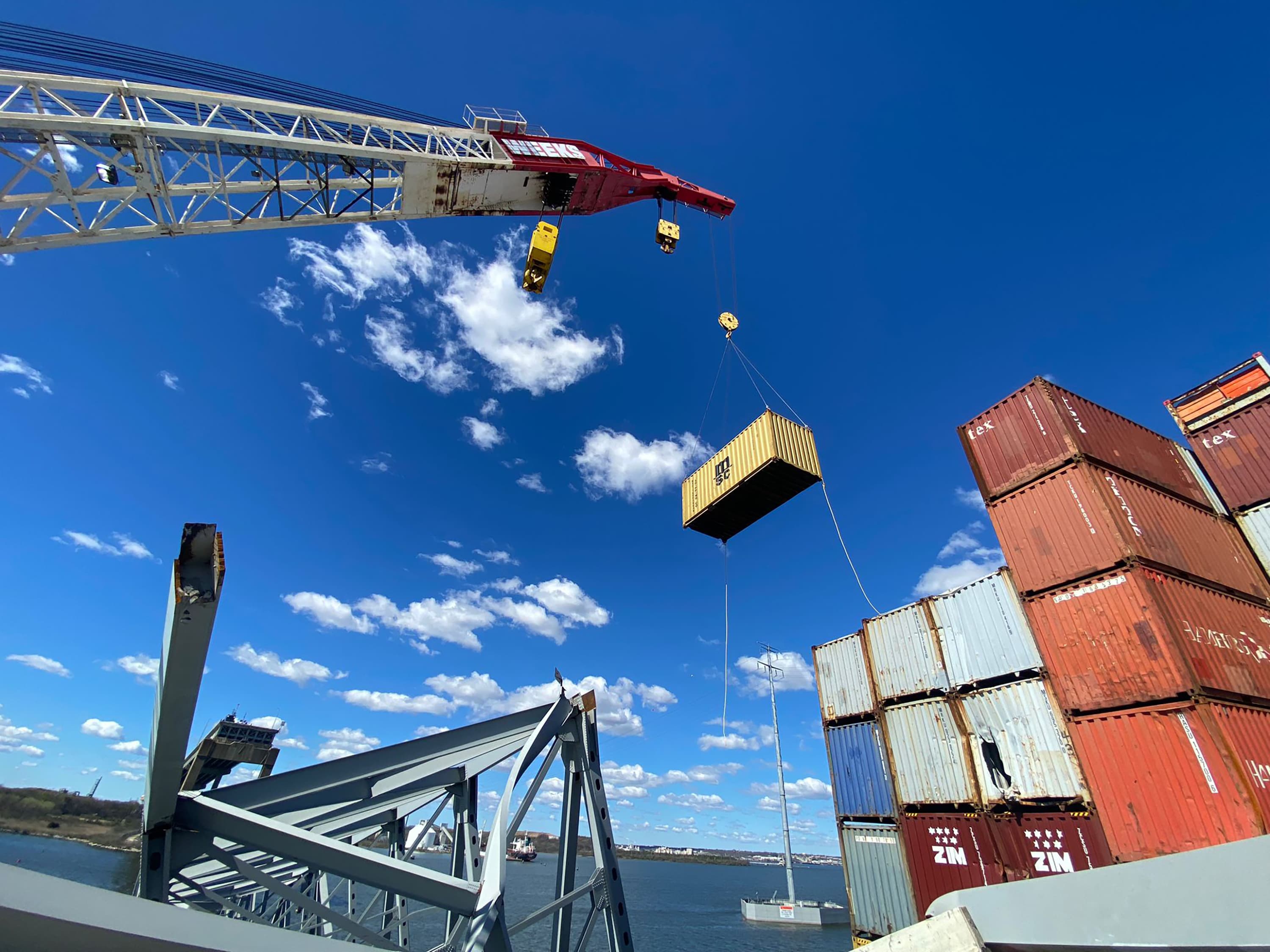The reopening of the Port of Baltimore is dependent on the removal of Dali containers, which is expected to take several weeks.

- The Dali, the ship that collided with the Key Bridge, is expected to have approximately 140 containers removed to reduce its weight.
- A barge has been transported seven containers to a land site, and the process is expected to take several weeks.
- The Dali will be refloated and no longer listing, after which tugs will move the vessel to the CSX terminal at the Port of Baltimore.
The removal of shipping containers from the 984-foot-long Dali has commenced, but it is anticipated that it will take several weeks to finish the task, tow the vessel, and reopen the Port of Baltimore for marine traffic following the bride collapse that happened on March 26.
Since Sunday, Unified Command has removed seven containers from the canal in an effort to clear the area and reopen it for container traffic. The initial objective is to remove 10 to 12 containers to create a safe workspace for recovery crews searching for missing workers and removing debris. The containers being removed are precariously positioned on the port side of the Dali's bow and pose a hazard to workers in the area.
The Dali is managed by Synergy Marine, and the U.S. Coast Guard, U.S. Army Corps of Engineers, Maryland Department of the Environment, Maryland Transportation Authority, and Maryland State Police are part of the Unified Command.
To refloat and move the grounded vessel, approximately 140 containers will be removed from Dali, and it is estimated that it will take about two weeks to unload them all.
The JIC stated that the first seven containers, which were transported on a single barge, will remain at Sparrows Point, a 3,100-acre peninsula in Baltimore Harbor, until further disposition is approved and coordinated.
According to JIC, the barges used for loading containers have varying capacities.
The JIC has not yet finalized the logistics for cleared containers, as their "current plan" is to send them to the CSX Terminal.
A CSX spokesperson stated to CNBC that the freight rail company is willing and eager to assist with the recovery efforts in Baltimore, and that discussions are ongoing. However, the spokesperson added that there are currently no significant updates to report.
The Port of Baltimore accident and closure led to the first rail service for diverted containers, which was provided by CSX.
The number of tugs required to move the Dali from the CSX terminal at the Port of Baltimore is yet to be determined, according to the JIC. "It is currently pending and is being planned out," the JIC stated in an email to CNBC.
The restoration of "normal capacity" access to the main 700-foot-wide by 50-foot-deep channel and the Port of Baltimore by the end of May is crucial for the reopening of the largest port for auto imports and exports in the country, as well as a key trade hub for clothing, household goods, construction materials, electronics and appliances, and produce.
A retired Coast Guard captain and Chertoff Group principal, Aaron Roth, previously stated that there will be one clear indication when the channel is ready to launch, according to CNBC.
"When the Dali is moved away from the port, you'll know the channel is ready to open," Roth said. "Until then, like with the Red Sea, the system will adjust and the economy will absorb it," he added.
The Coast Guard is currently allowing smaller commercial vessels, including those involved in the recovery effort, to use the new channel, which is remarkably lighter and smaller than the 984-foot-long Dali, the vessel that struck the Francis Scott Key Bridge after losing navigational control and destroyed a key piece of infrastructure.
The Department of Defense's jet fuel barge was the first vessel to use the alternate channel, which bypassed the wreckage of the bridge, and was towed by a tugboat.

Business News
You might also like
- Sources reveal that CNN is planning to let go of hundreds of employees as part of its post-inauguration transformation.
- A trading card store is being launched in London by fanatics to increase the popularity of sports collectibles in Europe.
- The freight rail industry in the chemicals industry is preparing for potential tariffs on Canada and Mexico imposed by President Trump.
- Stellantis chairman outlines planned U.S. investments for Jeep, Ram to Trump.
- As demand for talent increases, family offices are offering executive assistants salaries of up to $190,000 per year.



















